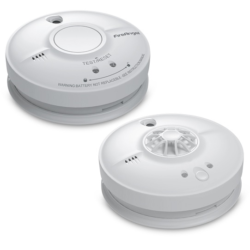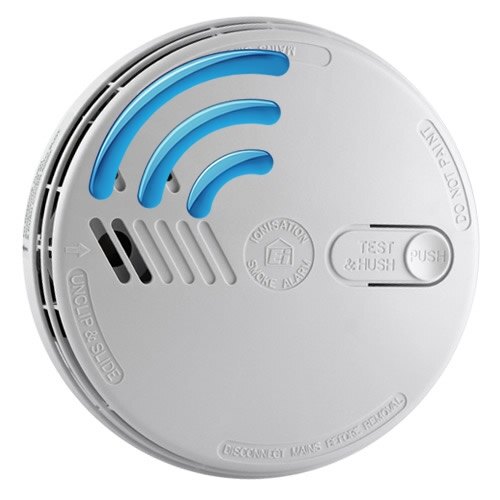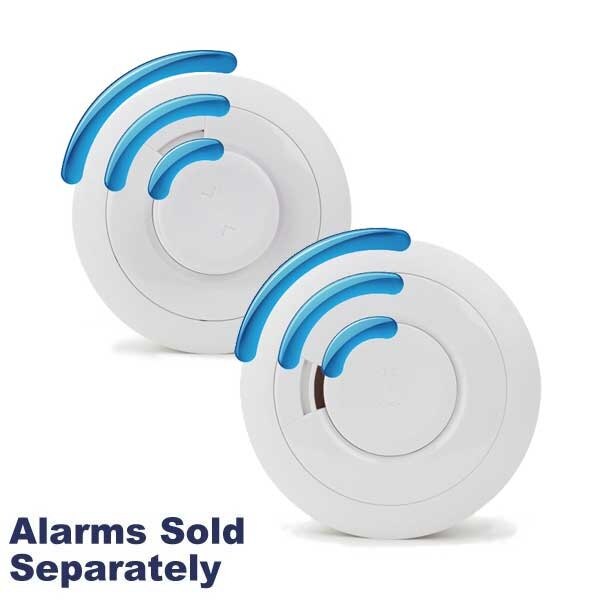Smoke Alarms to BS 5839 part 6
Smoke Alarms to BS 5839 part 6:2019
BS 5839 part 6 provides a framework of guidance for domestic smoke alarm installations. Within the standard, a series of grades are defined, and it is these grades that are used to identify the type and scope of systems needed for domestic properties. It also provides a handy key to quickly identify the features of smoke alarms on sale. This concise article will help you to find the most appropriate smoke alarm system and make sense of a specification you may have been asked to meet.
Whilst BS 5839 part 6 is defined as a specification for domestic premises, it also extends to cover certain other property types. The definition within the standard is as follows:
“BS 5839-6 gives recommendations for the planning, design, installation, commissioning and maintenance of fire detection and fire alarm systems in domestic premises that are:
- Designed to accommodate a single family
- Houses in multiple occupation that comprise a number of self-contained units, each designed to accommodate a single family
- Sheltered housing, including both the dwelling units and the common areas.”
Therefore, the owners of HMOs, as far as fire detection in the individual flats are concerned (in addition to alarm systems covering the common areas) are subject to the recommendations of this standard.
BS 5839 part 6 is referenced by building inspectors when assessing newly constructed houses or extension work to existing buildings. They make use of the grading system within the standard to clearly specify the type of system required for the given property.
The most common grade by far is Grade D for developments under the jurisdiction of a building inspector. A concise definition of a Grade D system is one which features a network of interconnected, mains powered smoke alarms with additional, integral battery backup power, plus a heat detector in the kitchen area (in most cases). Interconnection is required to ensure that an alarm signal is fully audible throughout a property in the event of a fire, and can be achieved either by a physical cable link, or a radio-interlink system.
However, whilst Grade D is the base standard for smoke detection in new builds, existing housing stock occupied by a single family remains free to install Grade F smoke alarms. This grade includes any smoke alarm that is battery powered – whether by removable batteries, or sealed, long life batteries. Grade F alarms had long been held to be inferior to Grade D alarms, due to the lack of an in-built backup system if primary power fails. However, cutting edge 10 year battery powered smoke alarms with built in radio-interlink capabilities are swiftly narrowing the perceived gap in terms of reliability.
Some high end Grade F systems are now being accepted as alternatives to a Grade D system in situations where it can be evidenced to the building inspector that the installation of mains powered alarms would be problematic. If you have a need to opt for battery powered alarms rather than mains powered, then discuss this with your building inspector, and present them with the specifications of a high quality long life smoke alarm with RF interlink.
We hope this summary has helped explain the relevance and real life applications of the British Standard for fire detection in domestic premises. If you would like further details about the other gradings within BS 5839 part 6: 2019, then click here to visit a page which breaks the standard down fully. To browse a selection of alarms conforming to either Grade D or Grade F, simply follow the links from the images below.
For more details about the other grades within part 6, please visit BS5839 part 6 info page
Categories:Fire Safety Equipment
March 5, 2012[Last updated: January 8, 2022]



Comments are closed here.